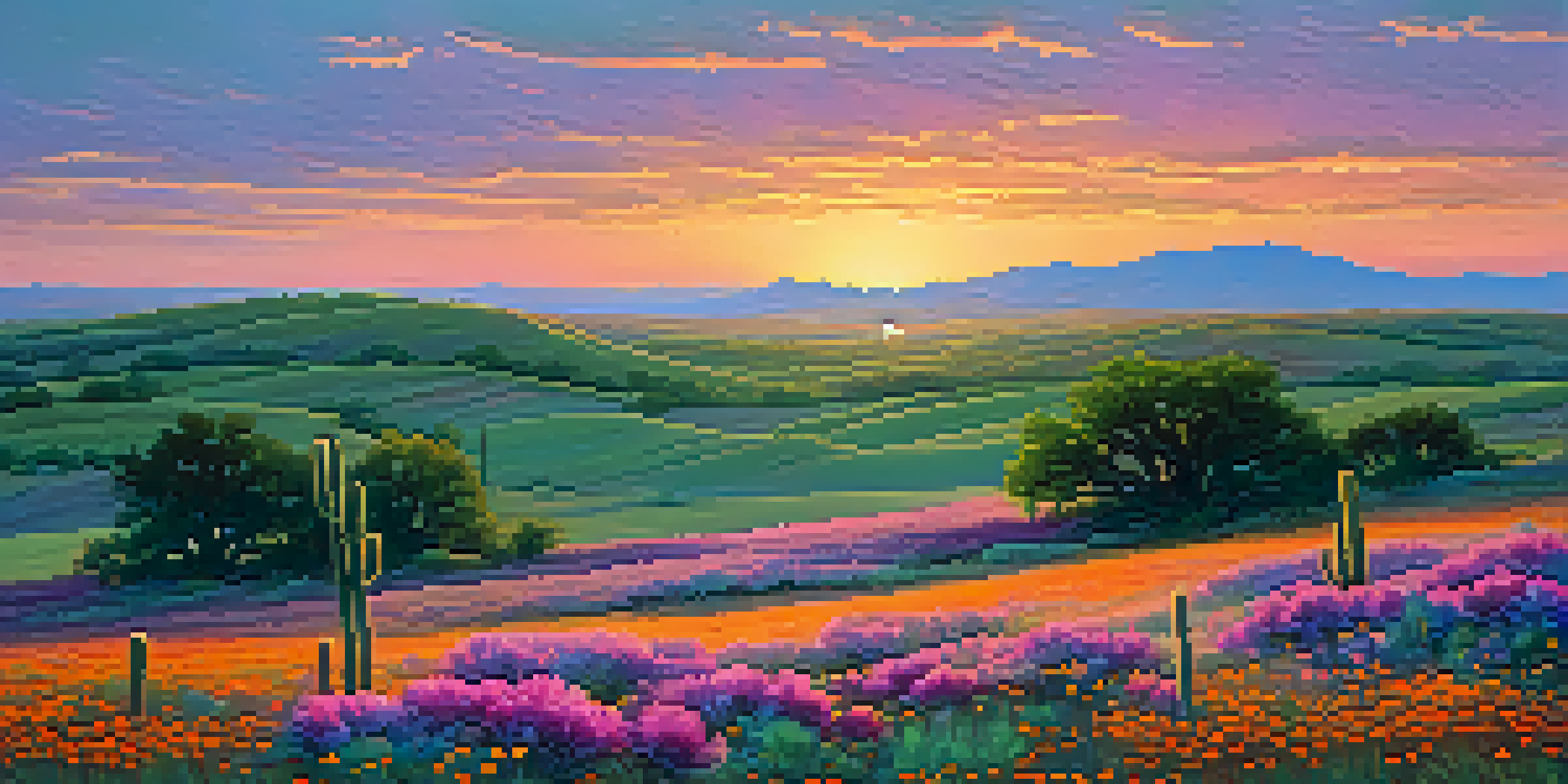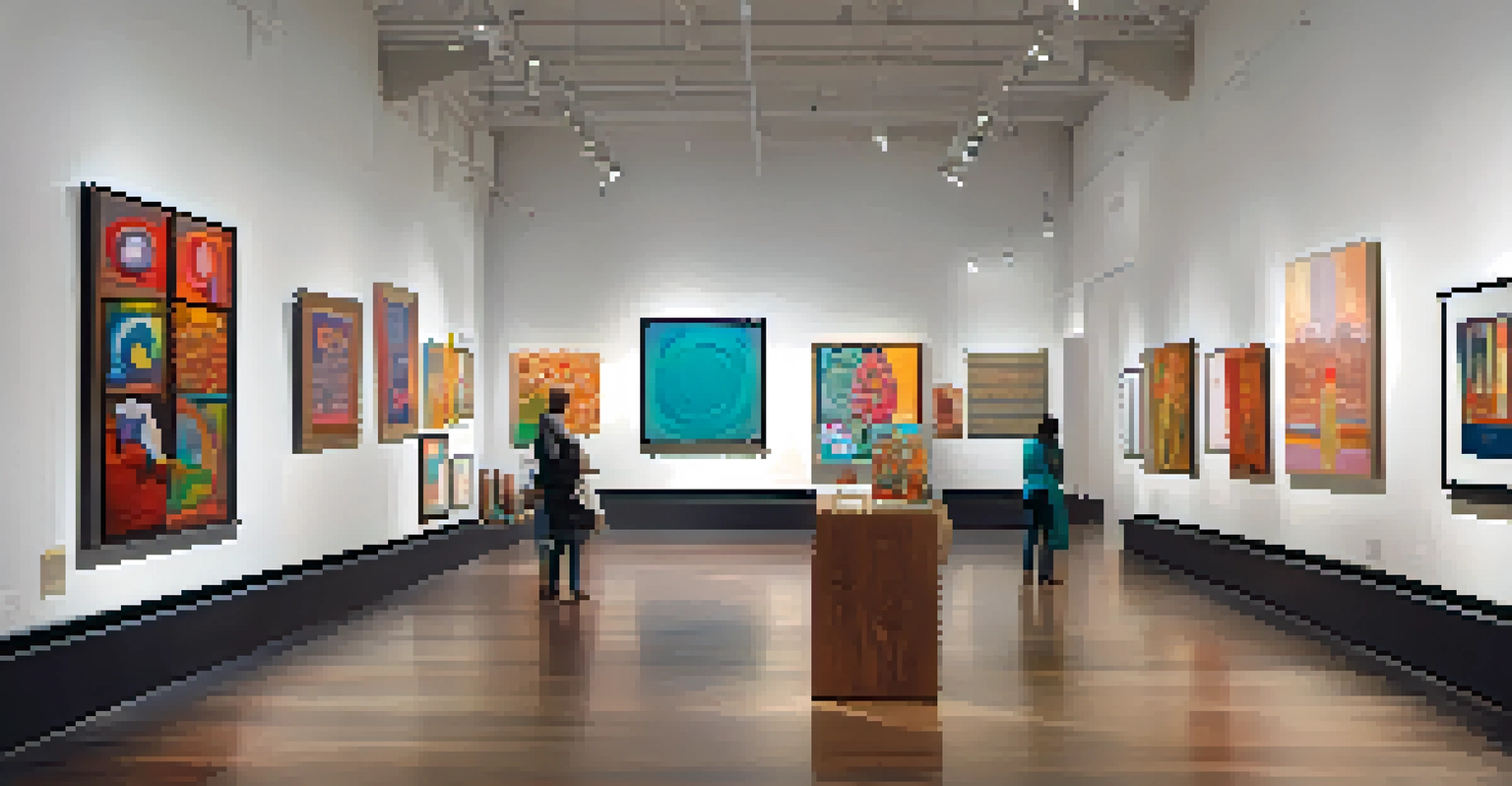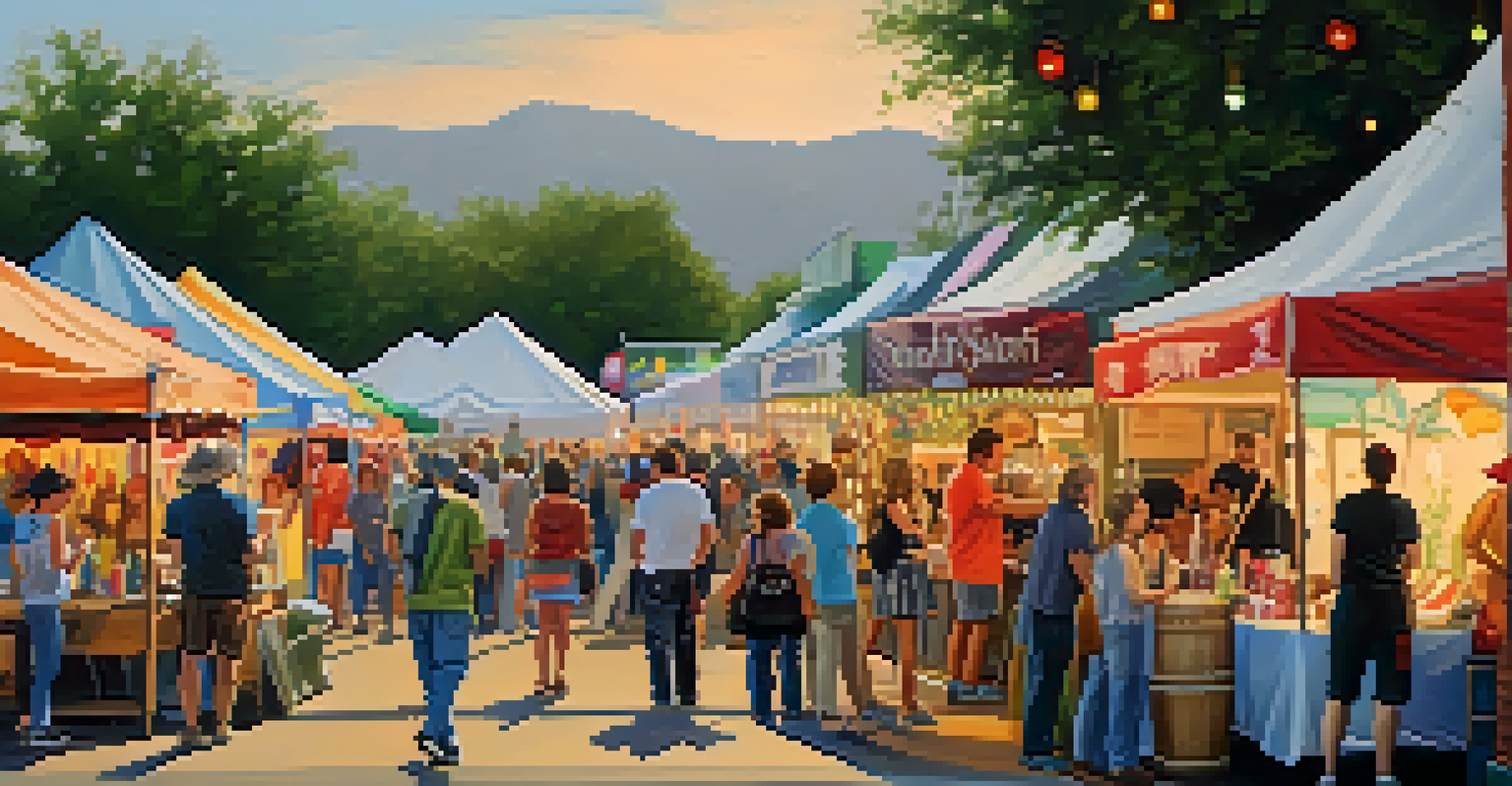Texas Art: A Journey Through Local Artists and Styles

The Rich History of Texas Art and Its Influences
Texas art has a rich history that reflects the diverse cultures and traditions of the state. From Native American influences to Spanish colonial roots, the artistic landscape has evolved significantly. This melting pot of cultures has led to a vibrant expression found in various art forms, including painting, sculpture, and textiles.
Art is not what you see, but what you make others see.
During the 20th century, movements like Texas Modernism began to emerge, showcasing a unique blend of styles that distinguished Texas artists from their counterparts elsewhere. Artists like Georgia O'Keeffe and Robert Rauschenberg drew inspiration from the Texas landscape, further enriching the artistic narrative. Today, this legacy continues to inspire new generations of artists.
As we explore Texas art, it’s important to recognize how historical events, regional characteristics, and cultural diversity have shaped the artistic expressions we see today. This foundation serves as a backdrop for understanding the works of contemporary Texas artists.
Highlighting Iconic Texas Artists and Their Works
One cannot discuss Texas art without mentioning iconic figures like Chuck Close, known for his photorealistic portraits, and his impactful connection to Texas through his education and exhibitions. Another notable artist is the late Jesús Moroles, whose granite sculptures have left a lasting impression on public art across the state. These artists have not only contributed to the local art scene but have also gained national recognition.

In addition to established artists, emerging talents are continually making their mark. For instance, artists like Julie Speed explore themes of identity and culture through captivating and imaginative works. Each artist brings a unique perspective that contributes to the diverse tapestry of Texas art.
Diverse Influences Shape Texas Art
Texas art is a vibrant tapestry woven from its rich history, cultural diversity, and the influence of various artistic movements.
This section highlights the importance of recognizing both historical and contemporary figures in Texas art, as their contributions shape the ongoing narrative of creativity in the Lone Star State.
Diverse Artistic Styles Represented in Texas
Texas art is characterized by a wide range of styles, from traditional to contemporary. For example, folk art has deep roots in Texas, with artists like Dolores Huerta showcasing vibrant, narrative-driven pieces that reflect local culture. These art forms often incorporate elements from everyday life, making them relatable and accessible.
Creativity takes courage.
On the other end of the spectrum, abstract and modern art continue to thrive in urban areas like Austin and Houston. Galleries and exhibitions often feature innovative works that challenge conventional norms and encourage viewers to engage in dialogue. This diversity in styles demonstrates the dynamic nature of Texas art.
Ultimately, the variety of styles found in Texas art not only highlights the state's cultural richness but also invites individuals to explore their own interpretations and connections to the artworks.
The Role of Art Galleries in Texas Communities
Art galleries play a crucial role in promoting Texas artists and fostering a vibrant art community. They serve as platforms for local artists to showcase their work, connect with collectors, and engage with the public. Many galleries also host events, workshops, and exhibitions that encourage community involvement and education.
In cities like San Antonio and Dallas, galleries have become cultural hubs that celebrate both established and emerging artists. For instance, the San Antonio Museum of Art frequently features local artists alongside international exhibitions, creating a dialogue between different art movements. This cross-pollination of ideas helps to nurture creativity and inspiration.
Art Galleries Foster Community
Local art galleries play a pivotal role in promoting artists, encouraging community engagement, and enhancing the cultural landscape.
By supporting local galleries, art enthusiasts can contribute to the growth of the Texas art scene while discovering new talents and styles that enrich their understanding of the state’s artistic landscape.
Art Festivals: Celebrating Texas Creativity
Art festivals are essential events that celebrate Texas creativity and bring together artists, collectors, and admirers. Events like the Texas Contemporary Art Fair in Houston showcase a wide array of artworks, from traditional to cutting-edge contemporary pieces. These festivals provide artists with opportunities to reach new audiences while allowing attendees to immerse themselves in the local art scene.
Moreover, festivals often include workshops, talks, and interactive installations, making them engaging experiences for visitors. For instance, the Austin Art City Festival features live music and performances, blending different forms of art into a cohesive celebration of creativity. This fusion of arts encourages cross-disciplinary collaboration and exploration.
Participating in art festivals allows individuals to experience the vibrancy of Texas art firsthand, fostering a deeper appreciation for the talent and creativity that thrive within the state.
The Impact of Technology on Texas Art
Technology has significantly transformed the way artists create, exhibit, and sell their work. In Texas, many artists are harnessing digital tools to expand their creative horizons, from virtual reality installations to digital painting. This integration of technology allows for new forms of expression and helps artists reach wider audiences through online platforms.
Furthermore, social media has revolutionized the art world, providing artists with the ability to showcase their work and connect with fans globally. Platforms like Instagram have become essential for Texas artists to build their brand and promote their exhibitions. This accessibility has democratized the art scene, making it easier for emerging artists to gain visibility.
Technology Transforms Artistic Expression
The integration of technology in Texas art allows artists to expand their creative boundaries and reach wider audiences.
As technology continues to evolve, so will the ways in which Texas artists engage with their audiences, challenging traditional notions of art and fostering innovation across the state.
Supporting Local Artists and Art Initiatives
Supporting local artists and initiatives is vital for the growth and sustainability of the Texas art community. This can be done through purchasing artwork, attending exhibitions, or participating in workshops. By investing in local talent, individuals contribute to the cultural fabric of their communities and help nurture creativity.
Additionally, many organizations and non-profits in Texas focus on promoting art education and accessibility. Programs that provide resources for underrepresented artists and offer scholarships for aspiring students play a crucial role in fostering the next generation of talent. These initiatives ensure that the Texas art scene remains vibrant and diverse.

Ultimately, by actively engaging with and supporting local artists, everyone can play a part in shaping the future of Texas art and preserving its rich cultural heritage.